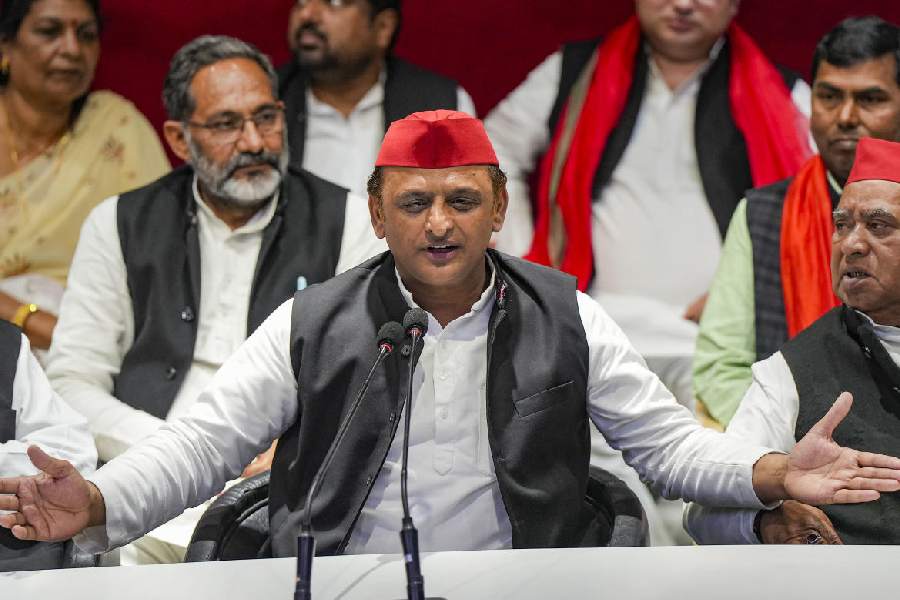Just 18 months ago, White House and Pentagon officials debated whether Russia’s forces in Ukraine might collapse and be pushed out of the country entirely.
Now, after months of Russian ground advances and technological leaps in countering American-provided arms, the Biden administration is increasingly concerned that President Vladimir Putin has enough momentum to change the trajectory of the war, and perhaps reverse his once-bleak prospects.
In recent days, Russia’s troops have opened a new push near the country’s second-biggest city, Kharkiv, forcing Ukraine to divert its already thinned-out troops to defend an area that it took back from Russian forces in a stunning victory in the fall of 2022.
Artillery and drones provided by the United States and NATO have been taken out by Russian electronic warfare techniques, which came to the battlefield late but have proved surprisingly effective. And a monthslong debate in Washington about whether to send Ukraine a $61 billion package of arms and ammunition created an opening that Russia has clearly exploited, even though Congress ultimately passed the legislation.
In interviews, American officials express confidence that many of these Russian gains are reversible once the spigot of new arms is fully opened and President Volodymyr Zelenskyy of Ukraine finds ways to bring more — and younger — troops to the front lines. But they are hesitant to offer predictions of where the battle lines may stand even a few months from now, or whether Zelenskyy will be able to mount his long-delayed counteroffensive.
American and allied officials interviewed for this article spoke on the condition of anonymity, in order to discuss intelligence reports and sensitive battlefield assessments. But some of the concerns have spilled out in public comments.
Secretary of State Antony Blinken said with some understatement Sunday that “there’s no doubt there’s been a cost” to the long delays in sending arms. He insisted, in his appearance on CBS’ “Face the Nation,” that “we’re doing everything we can to rush this assistance out there.”
In private, some of President Joe Biden’s aides worry that just as the United States has learned key lessons from the war — about technologies that work and those that do not — so has Putin. And their biggest concern is that as Russia replaces weaponry wiped out in the first 27 months of the war, Putin may be regaining ground just as Biden prepares to meet his closest allies at a Group of 7 meeting in Italy next month. It is unclear whether Biden will be able to repeat the claim he made in Finland last summer, that Putin “has already lost that war.”
Some veterans of dealing with Putin’s serial confrontations are unsurprised at this turn in events.
“Russia oftentimes starts its wars poorly and finishes strong,” Stephen Hadley, the national security adviser under President George W. Bush, said at a Harvard conference Friday. Now, he said, Russia has “brought its mass” — a far larger population to draw troops from, and a “huge military infrastructure” — to mount a comeback.
As Hadley suggested, there is no single reason for Russia’s battlefield advantage. Instead, multiple factors are helping Russia’s military advance.
Because of the delay in U.S. funding, Russia has been able to achieve a huge artillery advantage over Ukraine. The lack of air defense ammunition has also allowed Russia to use its air power with more impunity, attacking Ukrainian lines with glide bombs. With more air defense ammunition, Ukraine would be able to force those planes farther back, making it more difficult for Russia to attack from the air.
The delay in American supplies has been matched by a similarly long delay by Ukraine in approving a mobilization law to bring more, and younger, soldiers into its military. Ukraine is suffering acute shortages of soldiers, and is struggling to provide adequate training to those it brings into the military.
But all those Russian advantages will not last indefinitely, and Russian forces are likely to make a push this summer, said Michael Kofman, a Russia expert at the Carnegie Endowment for International Peace in Washington.
“In 2024, the Russian military enjoys a material advantage, and the strategic initiative, though it may not prove decisive,” Kofman said. “This year represents a window of opportunity for Russia. But if the Russian military is not able to turn these advantages into battlefield gains and generate momentum, there’s a fair chance that this window will begin to close as we enter 2025.”
Whether it is temporary or not, Russia’s new momentum is most evident in Kharkiv, scene of one of the biggest tank battles of World War II. In 2022, it was at the center of fighting in the first year of the war, with the city coming under artillery fire from advancing Russian troops.
In a surprise counteroffensive that fall, Ukrainian troops fought off the drive to the city, then pushed Russian forces out of the region, reclaiming a huge swath of land. The Russian humiliation, there and in the southern city Kherson, was so extensive that it led to one of the biggest fears of that period in the conflict: that the Russians would make use of a battlefield nuclear weapon against the Ukrainian troops as a last resort.
Since then, Ukraine has been able to use that recaptured territory near Kharkiv to conduct harassing attacks into Russia. Those attacks have prompted the Russians to retake land in recent weeks to create a buffer zone that Putin has said will make cross-border attacks harder for Ukraine to carry out. Recently, the head of Ukraine’s military intelligence agency has called the Russian advance near Kharkiv “critical.”
Some outside experts caution that Russia’s real strategic aim in taking territory around Kharkiv is to force Ukraine’s troops to move to reinforce the city, weakening the front lines elsewhere. That could set up an opportunity for another Russian drive in June, in the Donbas, the part of eastern Ukraine that the Kremlin has illegally annexed and is trying to capture.
“The Russian offensive aim is likely to draw Ukrainian reserves and elite units, then pin them in Kharkiv, thereby weakening the rest of the front,” Kofman said. “The primary Russian objective still remains recapturing the rest of the Donbas.”
Whether they are able to do so may depend in part on how successful Zelenskyy is in his effort to find new troops to relieve a weary, often demoralized force. He has lowered the age of Ukrainians subject to the draft to 25 from 27, despite considerable resistance within the Ukrainian public.
The United States is also trying to bolster technical advice to Ukraine, hoping to counter Russian technological advances. In some cases, Russia has successfully deceived GPS receivers, throwing off the targeting of Ukrainian arms, including a variety of missiles shot from HIMARS launchers, which Biden began providing to Ukraine last year.
Those launchers are scarce, but the Russians have grown more successful in tracing their movements, and in some cases destroying them even when they are well camouflaged.
These battlefield advantages are ephemeral, of course, and the war may look as different 18 months from now as it does from 18 months ago. But there is a growing sense inside the Biden administration that the next few months could prove critical, because at some moment the two sides may finally move to a negotiated cease-fire, an armistice similar to the one that ended the active fighting in Korea in 1953 — or simply a frozen conflict.
The New York Times Services










